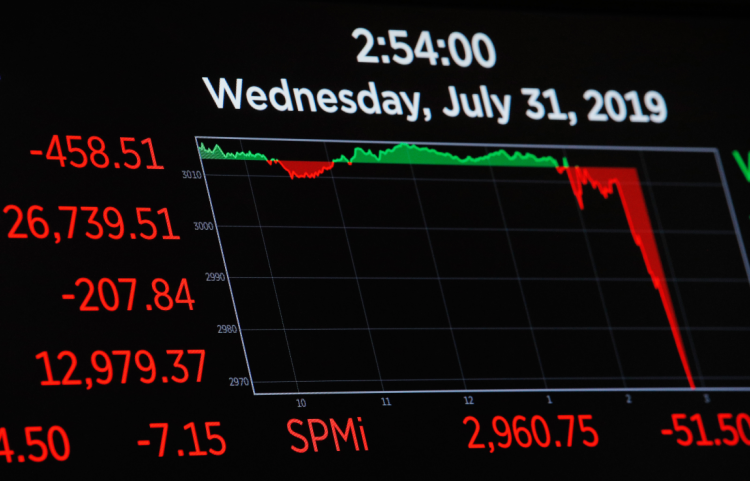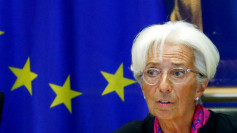U.S. Treasurys fell below 1% for the first time ever while gold jumped 2.9% as all three Wall Street indices plunged almost 3% lower Tuesday in a renewed massive rout, dismissing the 50 basis points rate cut made by the U.S. Federal Reserve within the day.
The 30-stock Dow Jones Industrial Average shed 785.91 points at the closing bell for a 2.94% loss and sinking to 25,917.41. The benchmark S&P 500 lost 2.82% to wind-up 87.14 points lower at 3,003.09 while the NASDAQ was down 268.08 or 2.99% at 8,684.09.
The rout had been foretold by Tuesday futures and an initial 400 point surge by the Dow early in Tuesday trading held out hope the forecast might be mistaken. The short-lived rally fizzled and later disappeared even after news of the Fed's first -- and biggest -- emergency rate cut since the Great Recession of 2008 began to sink in. Fed Chairman Jerome Powell, however, said the Fed isn't prepared to use any additional tools to stimulate the economy apart from the rate cuts.
Investors again fled to the safety of Treasurys and gold. The renewed flight to Treasurys pushed the benchmark 10-year yield below 1% for the first time ever. On the other hand, gold, surged 2.9% to land at $1,644.40 per ounce.
Analysts said the renewed market rout and selloff confirms investor fears the COVID-19 outbreak is raging out of control outside China and is spreading fast inside the United States.
As trading went on, Washington state reported an eighth and ninth death due to the coronavirus. All 10 COVID-19 deaths in the U.S. have occurred in Washington, which also has 21 confirmed virus cases -- the largest number in the country. New York state reported its second confirmed coronavirus case within the day.
Analysts said investors were anticipating the Fed rate cut and had priced it in. The surprisingly large selloff seems to have been triggered by the realization the Fed has limited firepower in dealing with the raging COVID-19 outbreak in the U.S. The Fed has no tools to boost consumer demand, which is severely threatened by people not going out and spending.
The Fed rate cut can't deal with supply-side shock, can't unclog supply chains or put more planes into the air said Catherine Rampell, an economic journalist who writes for The Washington Post and CNN.
She said the cuts were made to keep the fallout from spiraling into a recession. Congress can have a larger impact on keeping the market steady by using fiscal tools such as passing legislation that will pay employees even if they're sick, she contends.
Jeff Mills, the chief investment officer at Bryn Mawr Trust, said he isn't advising clients to buy back into the market. He also pointed out Monday's rally was just a "technical snapback."
"I think the spectrum of outcomes is so wide here that one trading the day is not going to resolve all of our issues, so we're telling our clients just to sit tight for now," according to Mills.
Adam Crisafulli, founder of Vital Knowledge, said "The market is still trying to find its footing." He contends the panicked collapse of the last week "isn't something that will be quickly forgotten, and it will take a couple of weeks (at least) before stocks are on firmer ground."






